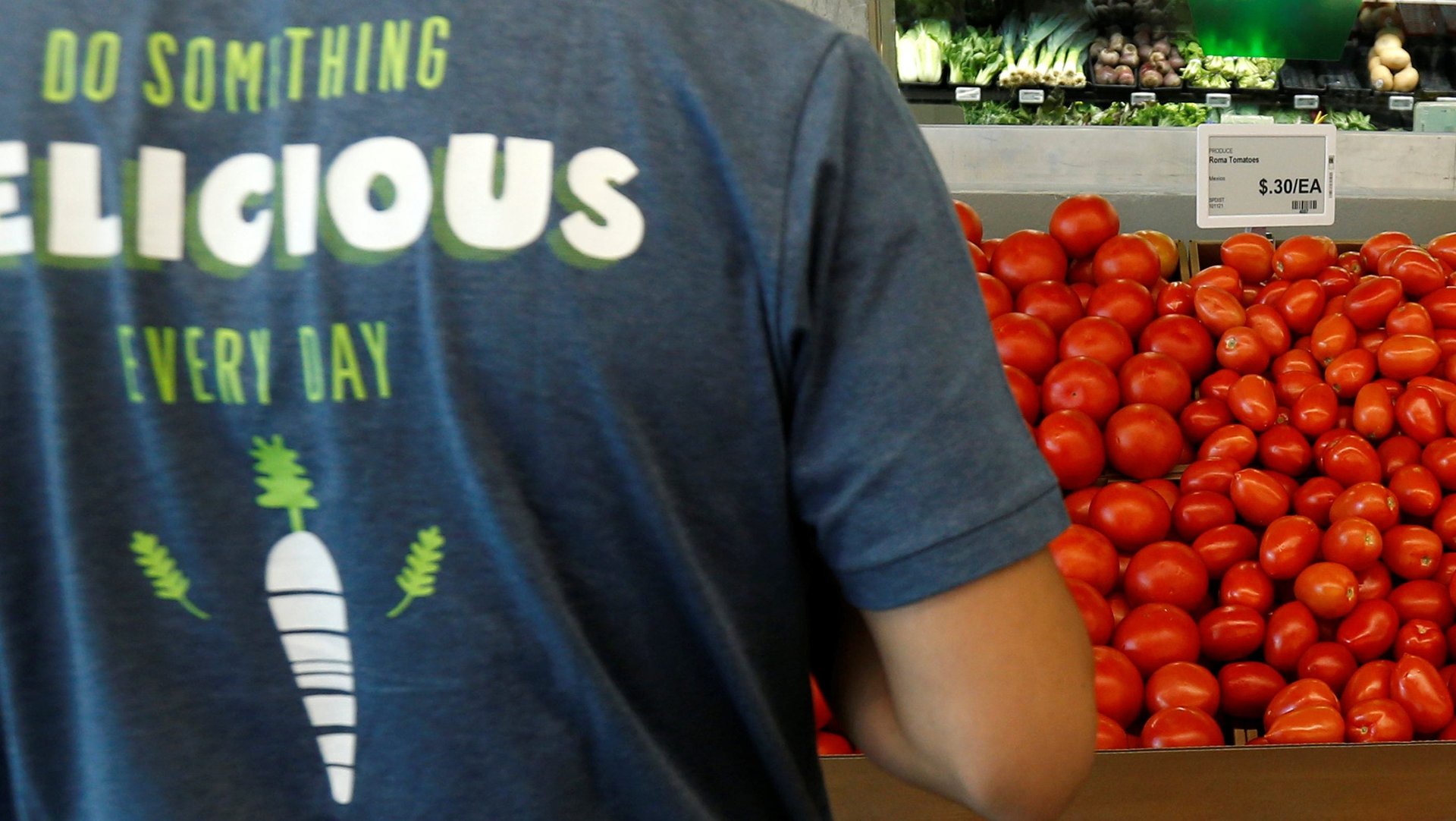Instacart’s huge new funding round means Uber-for-X isn’t dead yet
Uber-for-X isn’t dead yet. A startup in Los Angeles raised $10 million earlier this year to deliver rental cars to people. A new venture from a graduate student at Stanford is supplying ”emergency” items like tissues and deodorant on college campuses. And on-demand groceries company Instacart just closed $400 million in Series D funding. That brings its total financing to $711 million, and valuation to $3.4 billion.


Uber-for-X isn’t dead yet. A startup in Los Angeles raised $10 million earlier this year to deliver rental cars to people. A new venture from a graduate student at Stanford is supplying ”emergency” items like tissues and deodorant on college campuses. And on-demand groceries company Instacart just closed $400 million in Series D funding. That brings its total financing to $711 million, and valuation to $3.4 billion.
The fresh capital is a big vote of confidence for Instacart, which this time last year was in tumult. The company had suspended one-hour service in New York City and was slashing wages for the shoppers who fill its orders in the US. Despite a five-year deal with Whole Foods and revenue-generating partnerships with retailers like Costco and Target, Instacart was losing money on most orders.
There’s still reason to doubt. Instacart recently cut pay for workers in four US cities. Last September, it made the controversial decision to replace in-app tips with a company-collected “service fee.” Investor enthusiasm for the on-demand sector has also cooled. Funding to on-demand startups fell 35% in 2016 from the previous year, according to data from venture-capital research firm CB Insights.
But in an interview with Quartz on March 8, Instacart chief financial officer Ravi Gupta was optimistic. “Folks love our products,” he said.
Instacart now makes money on every delivery, Gupta told Quartz. The company also became contribution-margin profitable last fall. That means it books a profit after most operating expenses—shopper pay, auto insurance and workers comp, customer service, credit card fees, and money spent acquiring new workers—but before things like office rent and salaries for employees at HQ. Instacart’s calculation also doesn’t include any marketing costs, which have drained other on-demand startups. “We haven’t done any marketing historically, so we don’t really have a customer acquisition bucket,” Gupta said.
Grocery is the holy grail of delivery. Both traditional and e-commerce retailers believe that online grocery is key to turning casual shoppers into loyal customers. Amazon is hard at work on its own delivery service, Amazon Fresh, while Walmart and supermarket Kroger are testing delivery via Uber. Grocery was also a strength of Jet.com, the e-commerce startup Walmart acquired for $3.3 billion last August. Online grocery sales in the US are predicted to grow from $71 billion this year to $177 billion by 2022, according to a January report from financial services firm Cowen.
Another reason grocery delivery is so coveted is because the business is notoriously tricky. Costco never cracked it and Instacart precursor Webvan became one of the most famous flameouts of the dot-com bubble in the early aughts. Amazon has been trying to get it right since 2007. In brick-and-mortar supermarkets, margins can be as thin as 1% to 3%. “If anybody knows how to get 20% margins in groceries, call me!” Amazon CEO Jeff Bezos joked on Twitter last month.
For now, Instacart is in the lead. In 2016, Instacart’s US market share more than doubled that of Fresh Direct, its closest competitor, and nearly quadrupled that of Amazon Fresh, according to an analysis of e-receipts from 4.7 million online shoppers by research firm Slice Intelligence. But that edge might not last. Instacart’s growth in orders slowed every quarter last year while Amazon Fresh’s accelerated in the second half of the year.
Gupta said multiple revenue streams have stabilized Instacart’s finances. The company’s best-known revenue line is delivery fees. Most customers pay $5.99 per two-hour delivery (and $7.99 in New York). Twenty-eight percent subscribe to Instacart Express, a $149 annual membership that includes unlimited two-hour deliveries of orders over $35. Express customers make up 50% of all orders, Gupta said. They spend an average of $450 over four to five orders a month. In other words, those customers use Instacart nearly as often as the typical American went to the supermarket in 2016, according to the Food Marketing Institute.
Instacart also earns money by taking a cut of orders at partner stores, much like Uber collects a commission on rides. (Instacart calls this “revenue sharing.”) And it has advertising deals with consumer packaged goods companies like Nestle, Unilever, and General Mills that pay to promote their products in Instacart’s app or serve coupons to its users. In some stores, Instacart also marks up item prices. A recent viral post on Reddit detailed how one Instacart user in Boston paid $154.80 to have $86.87 worth of groceries delivered from Market Basket, an increase of 78%.
Beyond that, the company is quietly working on a white-label delivery service for grocery stores, “Powered by Instacart.” Instacart has rolled out this service for Whole Foods and Schnucks, a St. Louis-based grocery chain and Midwest staple. While most Instacart orders come in through the company’s app, for Whole Foods and Schnucks, Instacart built sites where customers can place their orders directly.
The approach seems likely to help Instacart win business from chains that are worried about losing business to big-box retailers like Amazon and Walmart, but which are also wary of being overshadowed by Instacart’s brand. The Wall Street Journal reported in December that Target executives feared a partnership with Instacart was boosting the startup’s brand more than their own.
Correction: An earlier version of this article misstated that a partnership between Instacart and Target fizzled. The partnership is still in place.